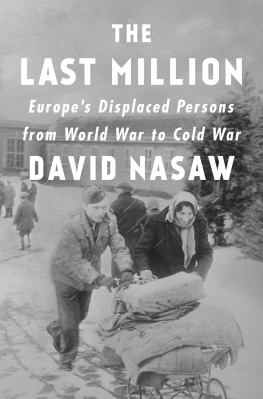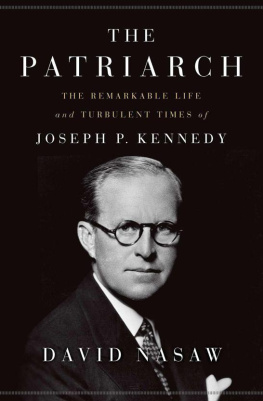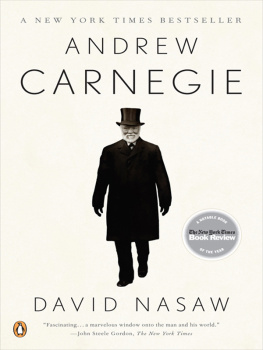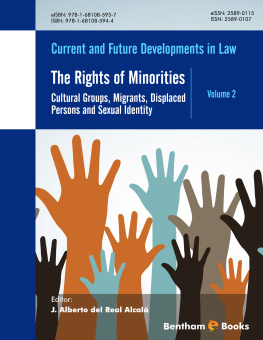David Nasaw - The Last Million: Europes Displaced Persons from World War to Cold War
Here you can read online David Nasaw - The Last Million: Europes Displaced Persons from World War to Cold War full text of the book (entire story) in english for free. Download pdf and epub, get meaning, cover and reviews about this ebook. year: 2020, publisher: Penguin Publishing Group, genre: Politics. Description of the work, (preface) as well as reviews are available. Best literature library LitArk.com created for fans of good reading and offers a wide selection of genres:
Romance novel
Science fiction
Adventure
Detective
Science
History
Home and family
Prose
Art
Politics
Computer
Non-fiction
Religion
Business
Children
Humor
Choose a favorite category and find really read worthwhile books. Enjoy immersion in the world of imagination, feel the emotions of the characters or learn something new for yourself, make an fascinating discovery.
- Book:The Last Million: Europes Displaced Persons from World War to Cold War
- Author:
- Publisher:Penguin Publishing Group
- Genre:
- Year:2020
- Rating:3 / 5
- Favourites:Add to favourites
- Your mark:
- 60
- 1
- 2
- 3
- 4
- 5
The Last Million: Europes Displaced Persons from World War to Cold War: summary, description and annotation
We offer to read an annotation, description, summary or preface (depends on what the author of the book "The Last Million: Europes Displaced Persons from World War to Cold War" wrote himself). If you haven't found the necessary information about the book — write in the comments, we will try to find it.
David Nasaw: author's other books
Who wrote The Last Million: Europes Displaced Persons from World War to Cold War? Find out the surname, the name of the author of the book and a list of all author's works by series.
The Last Million: Europes Displaced Persons from World War to Cold War — read online for free the complete book (whole text) full work
Below is the text of the book, divided by pages. System saving the place of the last page read, allows you to conveniently read the book "The Last Million: Europes Displaced Persons from World War to Cold War" online for free, without having to search again every time where you left off. Put a bookmark, and you can go to the page where you finished reading at any time.
Font size:
Interval:
Bookmark:
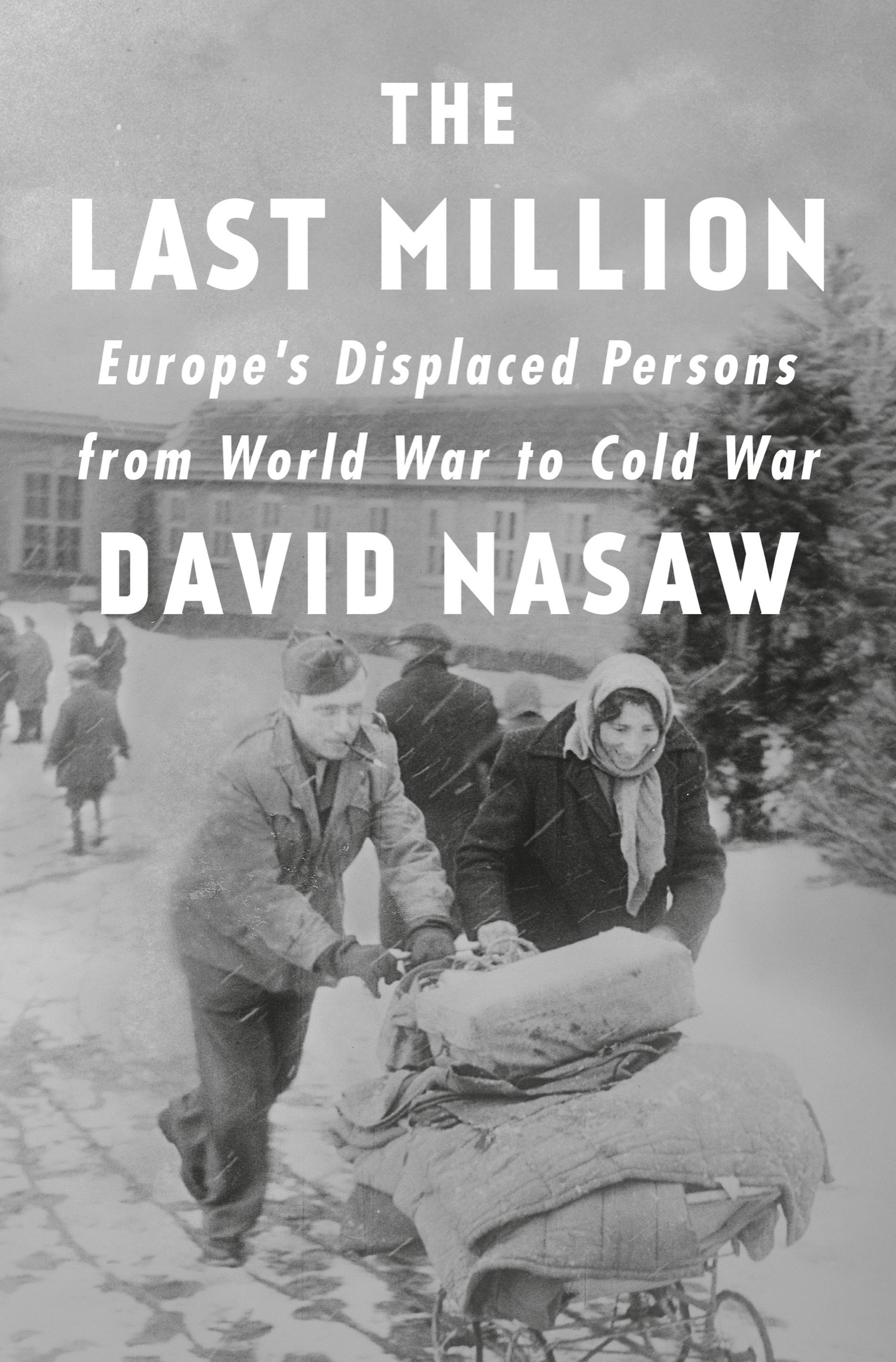
The Patriarch: The Remarkable Life and Turbulent Times of Joseph P. Kennedy
Andrew Carnegie
The Chief: The Life and Times of William Randolph Hearst
Going Out: The Rise and Fall of Public Amusements
Children of the City: At Work and at Play
Schooled to Order: A Social History of Public Schooling in the United States
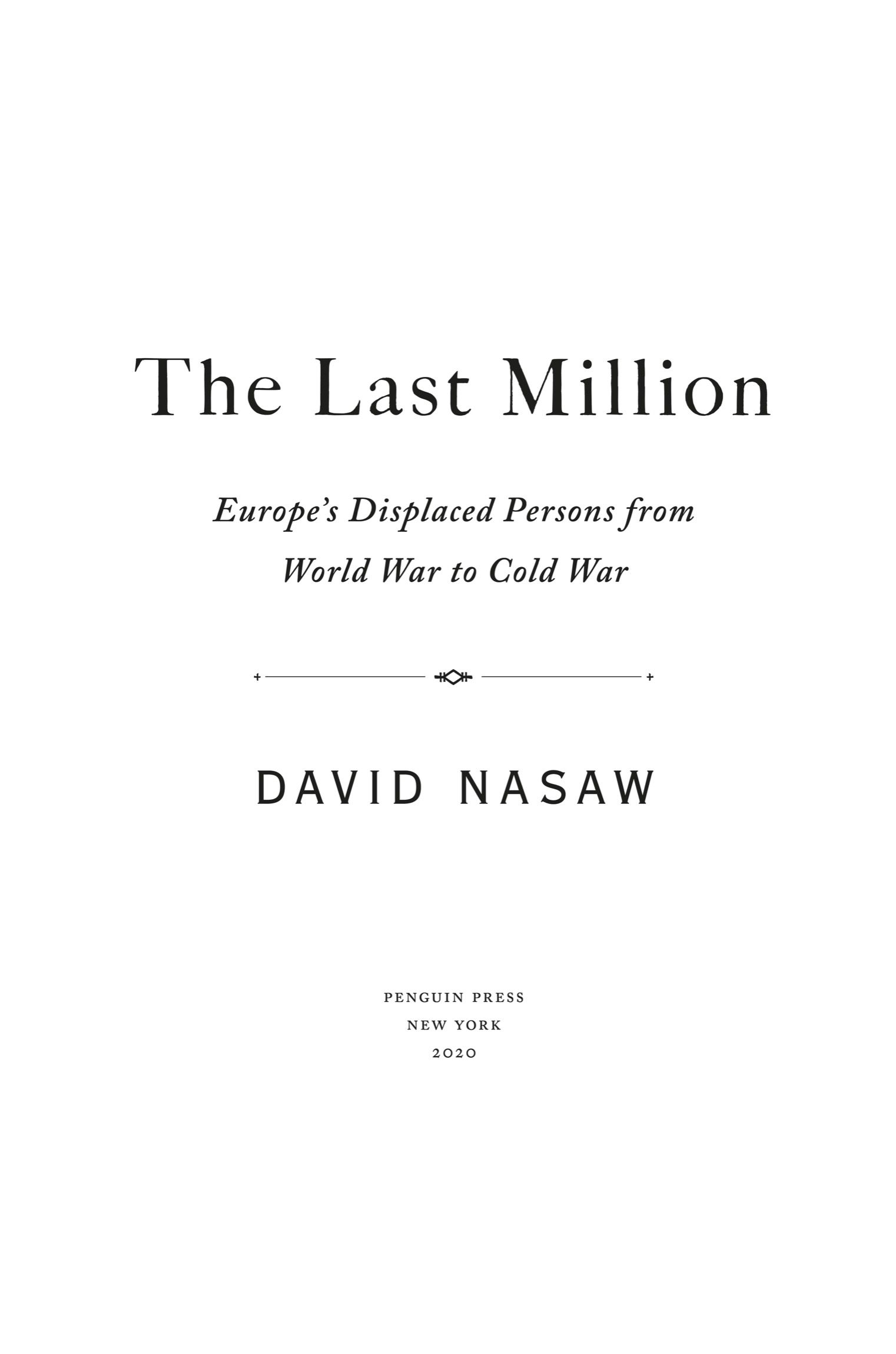
PENGUIN PRESS
An imprint of Penguin Random House LLC
penguinrandomhouse.com
Copyright 2020 by David Nasaw
Penguin supports copyright. Copyright fuels creativity, encourages diverse voices, promotes free speech, and creates a vibrant culture. Thank you for buying an authorized edition of this book and for complying with copyright laws by not reproducing, scanning, or distributing any part of it in any form without permission. You are supporting writers and allowing Penguin to continue to publish books for every reader.
Library of Congress Cataloging-in-Publication Data
Names: Nasaw, David, author.
Title: The last million : Europes displaced persons from World War to Cold War / David Nasaw.
Other titles: Europes displaced persons from World War to Cold War
Description: New York : Penguin Press, 2020. | Includes bibliographical references and index.
Identifiers: LCCN 2020016888 (print) | LCCN 2020016889 (ebook) | ISBN 9781594206733 (hardcover) | ISBN 9780698406636 (ebook)
Subjects: LCSH: World War, 19391945RefugeesEurope. | United Nations Relief and Rehabilitation Administration. | International Refugee Organization. | RefugeesEuropeHistory20th century. | RefugeesGovernment policyEuropeHistory20th century. | Jewish refugeesEuropeHistory20th century. | Political refugeesEuropeHistory20th century. | JewsEuropeMigrationsHistory20th century. | HumanitarianismHistory20th century. | EuropeEmigration and immigrationHistory20th century. | World War, 19391945RefugeesUnited States. | United StatesEmigration and immigrationGovernment policy.
Classification: LCC D809.E85 N37 2020 (print) | LCC D809.E85 (ebook) | DDC 940.53/145dc23
LC record available at https://lccn.loc.gov/2020016888
LC ebook record available at https://lccn.loc.gov/2020016889
Cover design: Christopher Brian King
Cover photograph: United States Holocaust Memorial Museum, courtesy of Morris and Lala Fishman
pid_prh_5.6.0_c0_r0
This book is dedicated to those who, having lived through the most difficult moments any human can endure, affirmed their existence, their joys and suffering, their expectations and hopes, through the acts of writing, speaking, and recalling them for future generations.

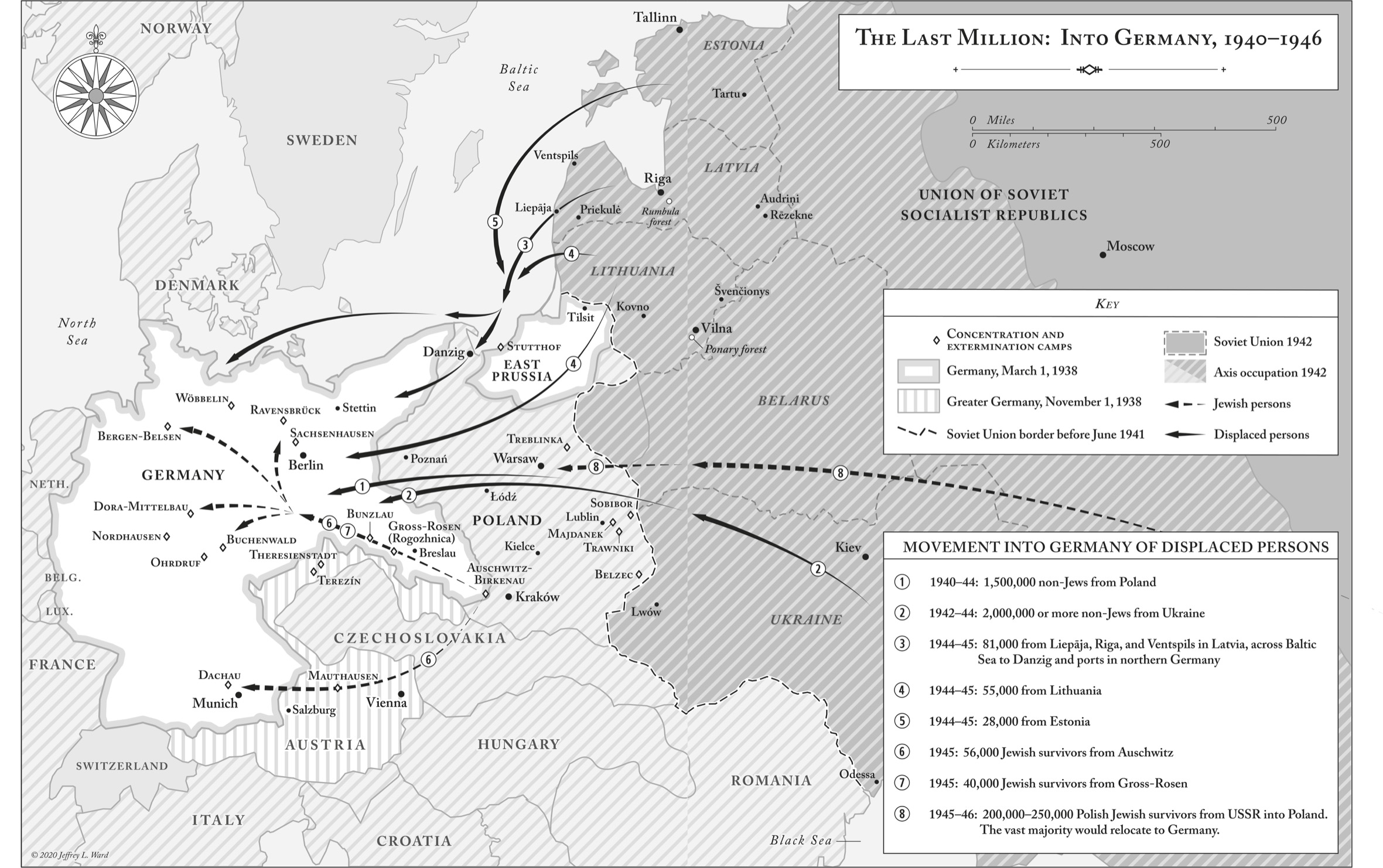

The violence of war did not end with the signing of cease-fires, truces, or peace treaties. War bled into postwar and millions of innocents who had never taken up arms continued to suffer long after the soldiers had gone home. Germany was in free fall; chaos reigned; national, regional, and local military, police, and political authorities had abandoned their posts. There was, literally, no one directing traffic, no one policing the streets, no one delivering the mail or picking up the garbage or bringing food to the shops, no one stopping the looting, the rape, the revenge-taking as millions of homeless, ill-clothed, malnourished, disoriented foreigners: Jewish survivors, Polish forced laborers, former Nazi collaboratorsall displaced personsjammed the roadways, the town squares and marketplaces, begging, threatening, desperate.
Wandering Hordes in Reich Alarming: Allies Fear Grave Problems May AriseAsk Liberated to Stay Where Freed, John MacCormac of the New York Times reported in a front-page story on April 7, 1945.
The American and British soldiers moving east into Germany, and the reporters who accompanied them, were transfixed by what Colliers magazine columnist W. B. Courtney referred to as wars living wreckageliving, moving, pallid wreckage.
It washed up and down the margins of the autobahn in a dragging tide. It was composed of people of all sizes, ages, races and varieties or garments. A few had bicycles. Some pushed handcarts. The majority, however, rolled baby carriages. The baby carriage is the sorriest joke in Europe today, for you never see a baby in one.... Instead they are filled with pots and pans and tools, and all the impediments of nomads. There were shivering maids, and youths in shorts, with legs blue and raw. There were released German soldiers with their army packs and cut branches for walking sticks. You knew the displaced persons by the bulk of their clothing and the magnitude of their bundles. A man wearing two or even three suits, a woman wearing several dresses and a couple of coats and carrying more were not unusual sights. None seemed to want food. Their want lay sadly deeper, and you could not touch it with your pity but could only surmise that it was for country and home and news of loved ones. Having once seen the wandering lost millions of Europe, you could never forget them, even as you could never fully know what thoughts were in their minds or what lumps were in their hearts. In the rain and wind, they were a steamy, abject porridge of human woe.
Barely clothed in ripped and ragged, oversized striped camp uniforms, the Jewish survivors were distinguishable by their pallor, emaciated physiques, shaved heads, lice-infested bodies, and the vacant look in their eyes. You could see them walking down the street, Chaplain Herbert Eskin of the U.S. Army recalled, some of them, with torn shoes, barefooted, with their long coats, the women, and the men with the pajamas, you know, dirty, very short hair looking to talk to someone for aid.
The vast majority of Jewish survivors remained in the camps, too ill to leave on their own. The soldiers who encountered them tell the same stories of initial shock, then disgust, accompanied by alternating waves of pity, anger, and stomach-churning illness, followed by a body- and soul-wearying sadness that would not dissipate, a disillusionment with all things human, an enervating, pervasive disquiet that would remain with them for the rest of their lives.
Their first task was the burial of the dead and the triage of the living. Thousands of corpses littered the ground, or were stacked in sheds or uncovered graves. Among the living were those known within the camps as the Muselmnner, the unworldly, ghostly walking dead, too ill, too weak, too hurting to be moved, who had to be bathed and fed in their barracks until they were strong enough to be removed on stretchers to hospital facilities. Those afflicted with or dying of typhus were quarantined and left to perish. Those who were ambulatory were moved to assembly centers to be patched together again and repatriated, as soon as possible.
On April 11, Buchenwald was liberated by the inmates, hours before the arrival of the American army, but after the Germans had evacuated some twenty-eight thousand prisoners, a third of whom had died in sealed railroad cars or on arrival at their new camps or while trying to escape. On entering the camp, American soldiers from the 6th Armored Division of the Third Army found twenty thousand inmates, four thousand of whom were Jews.
Font size:
Interval:
Bookmark:
Similar books «The Last Million: Europes Displaced Persons from World War to Cold War»
Look at similar books to The Last Million: Europes Displaced Persons from World War to Cold War. We have selected literature similar in name and meaning in the hope of providing readers with more options to find new, interesting, not yet read works.
Discussion, reviews of the book The Last Million: Europes Displaced Persons from World War to Cold War and just readers' own opinions. Leave your comments, write what you think about the work, its meaning or the main characters. Specify what exactly you liked and what you didn't like, and why you think so.

